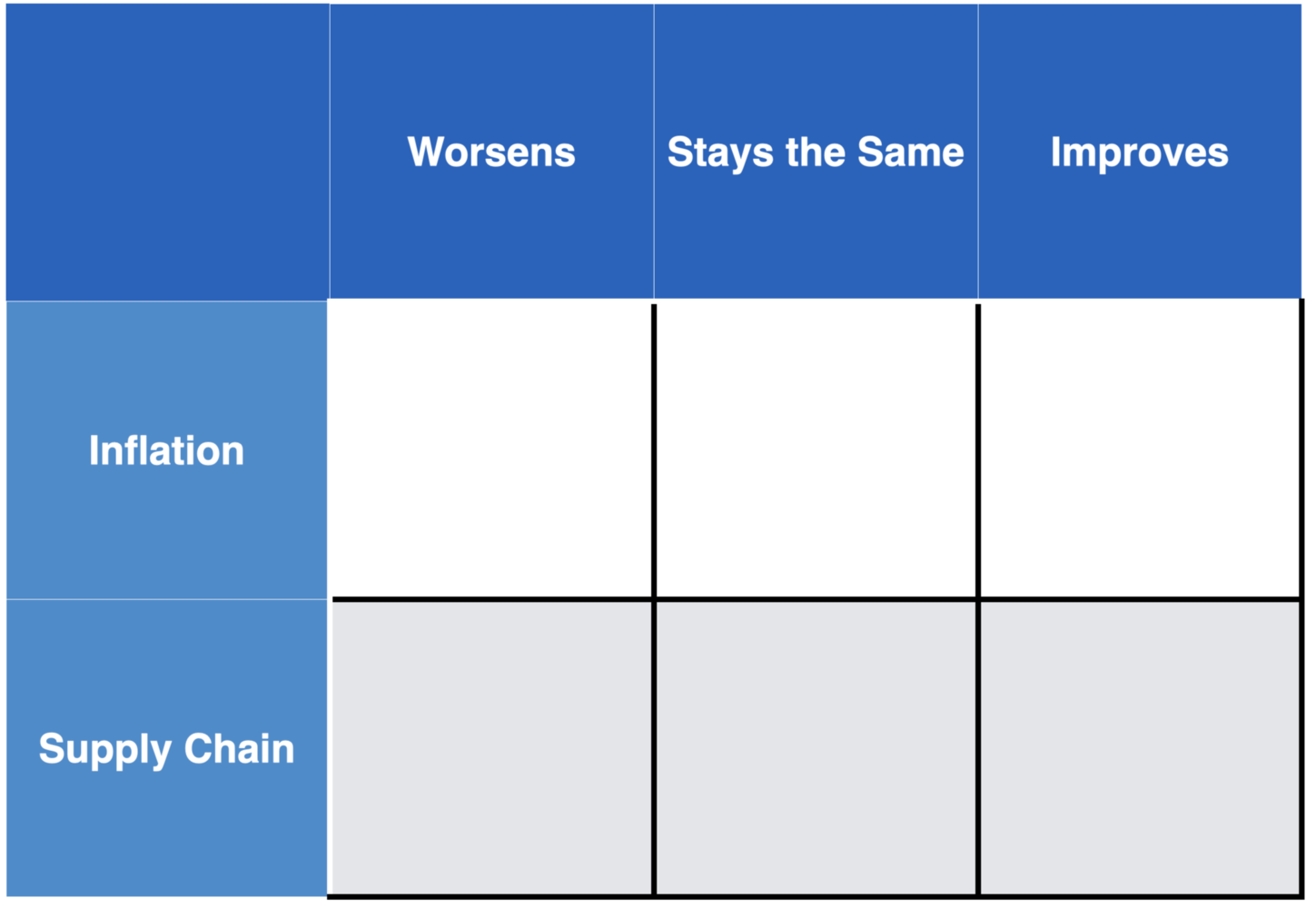Second in a Series
This four-part series addresses strategies for managing the challenges of living in and leading through VUCA (Volatility, Uncertainty, Complexity, and Ambiguity). If you missed the first installment (which puts VUCA in a historical context and offers strategies for managing the V in VUCA – Volatility), you can find it here. This installment focuses on taming Uncertainty.
Certainly Uncertain
In 1789 US founding father Benjamin Franklin wrote French Physicist Jean-Baptiste Le Roy:
“In this world, nothing can be said to be certain except death and taxes.”
Since Franklin’s time, we can add two additional “certainties” to the list – change and VUCA business environments. So, how can we navigate ever-changing and uncertain business conditions? The short answer – develop scenario-planning skills.
In a Wall Street Journal article titled “Scenario Planning Purpose-Built for Uncertain Times,“ Peter Schwartz shares the perspective of Andrew Blau, Deloitte Consulting LLP managing director:
Scenarios have been enormously powerful tools for organizations for decades. They are flexible and have many applications. They’re used by leaders to identify strategic choices that might be available to them depending on how the future unfolds. Leaders also use them to identify and mitigate risks that might be coming over the horizon. Scenarios are also used for innovation—they can show the outlines of new markets or changes in consumer behaviors. And in some cases, they’re used for executive education and organizational design, helping to reveal the leadership qualities and corporate structures that will be needed in the future.”
In that same article, Peter offers the insights of Michael Kearney, advisory managing partner for Deloitte & Touche,
Scenarios are not predictions; in fact, they are an antidote to predictions. They don’t tell us what’s going to happen. They acknowledge many possible outcomes; we can’t say with any certainty what the future will bring. They serve as a backdrop against which users can structure their thinking and consider their options. If this or that happens, how might society be different? How might consumer behavior change? How might technology be adopted in new ways?
The Art of Scenario Planning
Given that scenario planning provides “a backdrop to structure thinking and consider options” – especially in times of uncertainty, let’s look at seven key elements needed to use scenarios effectively:
1. Understand the distinction between Scenario Planning and Forecasting –Forecasting calculates a business’s future profitability based on current and historical data. It is a quantitative approach to assessing future performance. It is typically conducted with an assumption of stability or maintaining a trend. Contrastingly, scenario planning involves speculating on favorable or unfavorable future business conditions.
2. Set the timeframe for your scenarios – To be productive, scenarios must be framed in the context of a time horizon. Are you predicting conditions over the next six months, one year, or five years? In periods of greater volatility, timeframes usually contract.
3. Look at external forces using PESTEL. A PESTEL analysis is a strategic framework used to evaluate business conditions. PESTEL stands for Political, Economic, Social, Technological, Environmental, and Legal factors.
4. Select two critical uncertainties – These could be something like Inflation and Supply Chain
5. Create a two-by-two or two by three table – On this table, place the two critical uncertainties on the vertical axis and various levels of those conditions on the horizontal access as depicted below:

6. Assess the implications of each scenario – Engage cross-functional teams that represent your entire organization to determine how each of the scenarios (in the example above – all six possibilities) will affect your business and what you will need to do in each circumstance.
7. Monitor and course correct – Track the two critical uncertainties and make course corrections based on how those issues evolve. Also be willing to replace uncertainties with other emerging issues.
Invariably, successful leaders need to get comfortable with uncertainty, develop refined scenario planning skills, and be willing to adjust scenarios expeditiously!
Related: What Is VUCA & How Do You Thrive in Volatile Times?


